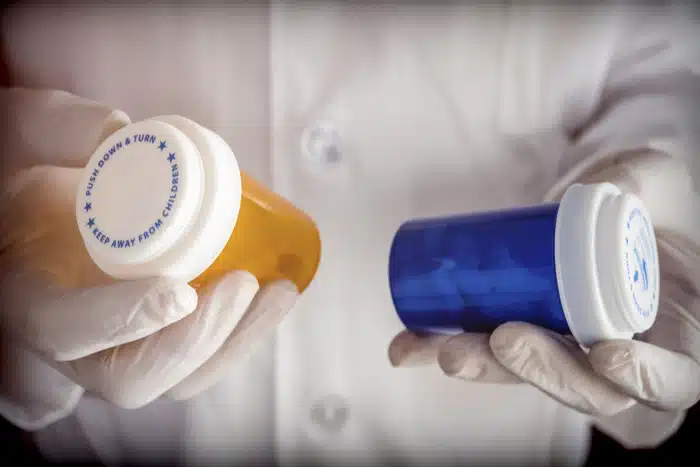Up to half of women with uterine fibroids will seek treatment for bothersome symptoms like heavy periods, severe bloating, and painful sex.1 One such treatment is uterine fibroid embolization (UFE). An effective nonsurgical approach, UFE has shown to offer relief to nearly nine out of ten women treated.2
Despite these advantages, a downside to UFE is reported pelvic pain and cramping that may follow the procedure. Typically lasting up to 12 hours, this post-UFE pain may require opioid medication, also called narcotics, to provide relief.3 A team of researchers at Pennsylvania Hospital in Philadelphia, PA, found that performing UFE from the wrist—an approach called transradial access—combined with a nerve block targeting nerves in the lower back that supply sensation to the uterus and trigger post-UFE pain may reduce the need for opioids after the procedure.4
The study involved 79 women who underwent the combined treatment.4 Results showed that transradial UFE had a 97% technical success rate. The nerve block—which targeted the superior hypogastric nerve plexus—was successful in all but one patient. Of these 78 patients, nearly half (49%) didn’t require opioid medications following the procedure. The researchers also found that by using this protocol, patients were discharged home in about two and a half hours. Six patients returned five days later, needing treatment for uncontrolled pain or nausea.
UFE has traditionally been performed through the femoral artery in the groin area, but now—with a transradial option—UFE can access fibroids from the radial artery in the wrist. Doctors called interventional radiologists begin by making a nick in the wrist and inserting a slim catheter into the radial artery. Under the guidance of magnetic resonance imaging (MRI), the catheter is then threaded into the uterine vessels that supply fibroids with blood. Tiny particles are injected, plugging these vessels. Without a blood supply, fibroids begin to shrink and die, and symptoms start to improve.
Using the wrist to perform UFE has been shown to boost patient comfort immediately after the procedure.5 Patients have reported that transradial advantages such as being able to sit up in a comfortable position and get out of bed to use the toilet after the procedure have improved the overall patient experience.5
UFE pain management protocols vary but involve medication, typically opioids, administered intravenously (IV), through patches, and/or orally. Opioids work by blocking pain signals sent from the body through the spinal cord to the brain.6 In contrast, a nerve block is a regional anesthesia. Using specialized X-ray equipment, a small needle is used to inject pain medication near a cluster of nerves along the spinal cord, numbing only the part of the body affected by pain.7 Research has shown that complications are rare.3
This combined approach to UFE has many patient advantages. But as with any medical procedure, it’s important to talk to your doctor about whether you’d make a good candidate for this line of treatment and about any risks involved.
REFERENCES
- Soliman, A. M., Yang, H., Du, E. X., et al. (2015). The direct and indirect costs of uterine fibroids tumors: A systematic review of the literature between 2000 and 2013. Am J Obstet Gynecol, Aug;213(2):141-160.
- Silberzweig, J. E., Powell, D. K., Matsumoto, A. H., et al. (2016). Management of uterine fibroids: A focus on uterine-sparing interventional techniques. Radiology, Sep;280(3):675-692.
- Boucher, L., Bahir, A., Yoon, J., et al. (2016). Superior hypogastric nerve block for acute pain control in uterine fibroid embolisation. J Vasc Interv Radiol, March;27(3):S285-S286.
- Maratto, S., Alkhatib, S., Huang, J., et al. (2018). Trans-radial uterine artery embolization with superior hypogastric nerve block: Optimizing pain control and minimizing length of stay. [Abstract]. J Vasc Interv Radiol, Apr;29(4):S184.
- Resnick, N. J., Kim, E., Patel, R. S., et al. (2014). Uterine artery embolization using a transradial approach: Initial experience and technique. J Vasc Interv Radiol, Mar;25(3):443-447.
- American Society of Anesthesiologists. (n.d). What are opioids? Retrieved from https://www.asahq.org/whensecondscount/pain-management/opioid-treatment/what-are-opioids/
- American Society of Regional Anesthesia and Pain Medicine. (n.d.). Regional anesthesia for surgery. Retrieved from https://www.asra.com/page/41/regional-anesthesia-for-surgery







